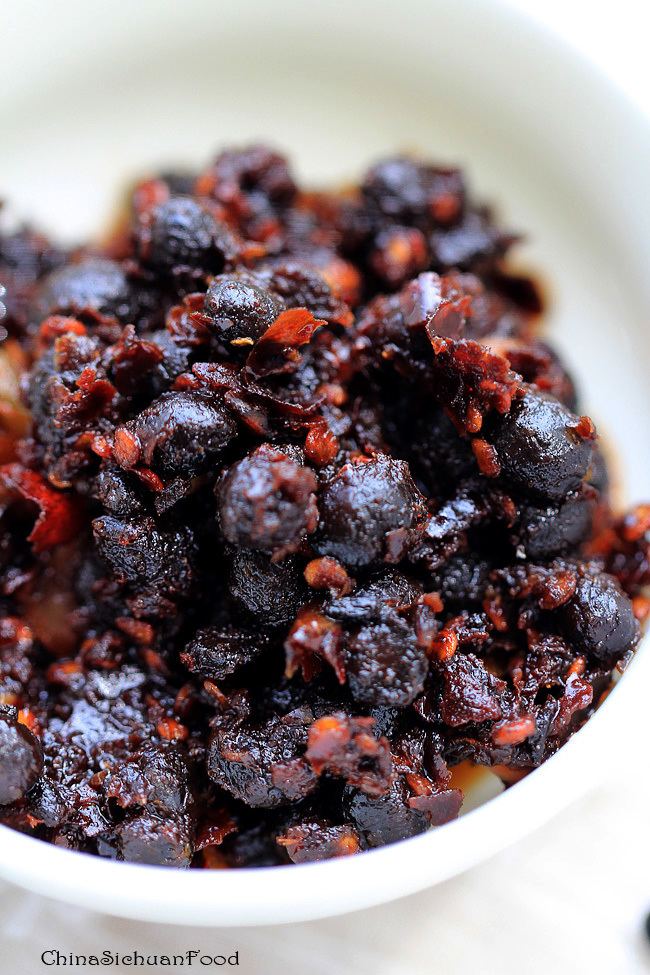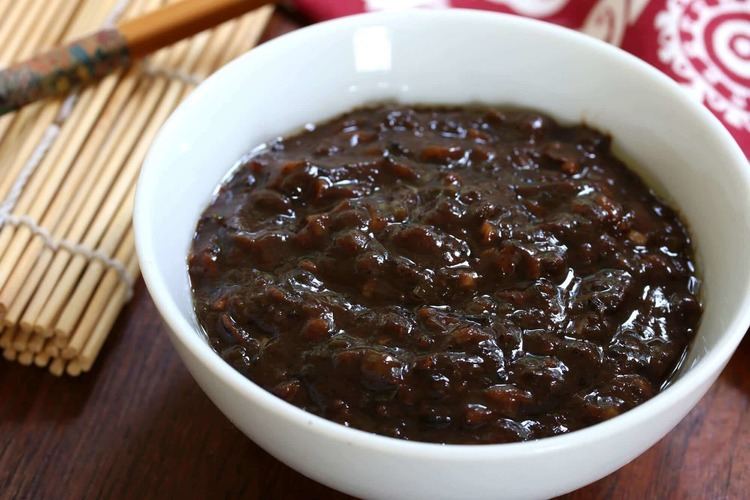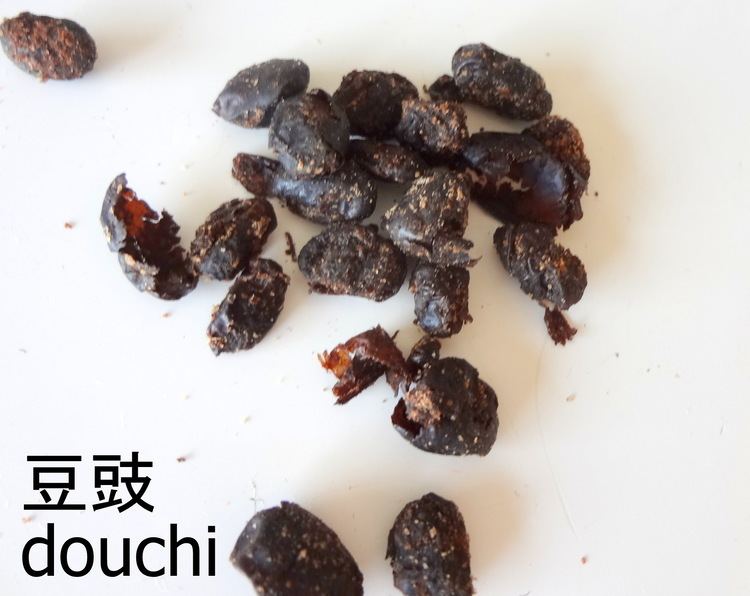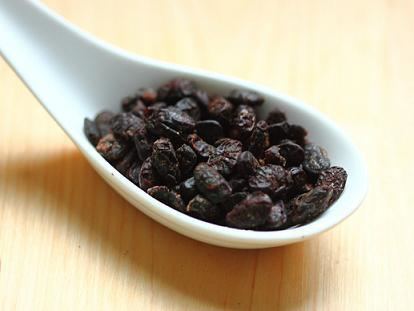Main ingredients fermented Soybean | ||
 | ||
Alternative names fermented black soybeans, Chinese fermented black beans, salted black beans, salty black beans Similar Sweet bean sauce, Doubanjiang, Kung Pao chicken, Oyster sauce, Hot and sour soup | ||
Douchi
Douchi (Chinese: 豆豉; pinyin: dòuchǐ; Jyutping: dau6si6) is a type of fermented and salted black soybean. In English, it is known as fermented black soybeans, Chinese fermented black beans (黑豆豆豉; hēidòu dòuchǐ; hak1dau6 dau6si6), salted black beans, salty black beans, or just black beans. They are a flavoring most popular in the cuisine of China, where they are most widely used for making black bean sauce dishes.
Contents

Douchi is made by fermenting and salting black soybeans. The black type soybean is most commonly used and the process turns the beans soft, and mostly semi-dry (if the beans are allowed to dry). Regular soybeans (white soybeans) are also used, but this does not produce "salted black beans"; instead, these beans become brown. The smell is sharp, pungent, and spicy; the taste is salty, somewhat bitter and sweet. The product made with white soybeans is called mianchi.

The process and product are similar to ogiri and iru, both being African fermented bean products.
Douchi, "Chinese salted black beans", and "black soybeans" should not be confused with the black turtle bean, a variety of common bean that is commonly used in the cuisines of Central America, South America, and the Caribbean.

Pork tofu with black beans
History

Fermented black soybeans are the oldest-known food made from soybeans. In 165 BC, they were placed, clearly marked, in Han Tomb No. 1 at Mawangdui tomb site in South Central China. The tomb was sealed about 165 BC and was first opened in 1972. The high-ranking woman to whom the undisturbed tomb belonged was probably the wife of the first Marquis of Tai.

In 90 BC, in the Records of the Grand Historian by Sima Qian, Chapter 69, refers to 1,000 earthenware vessels of mold-fermented cereal grains and salty fermented soybeans (shi). They were now an important commodity in China. When the prince of Huainan (legendary inventor of tofu) was exiled for inciting rebellion (in 173 BC) against his brother, the Han Emperor Wendi, his retinue and he were, nevertheless, provided with such necessities of life as firewood, rice, salt, shi (fermented black soybeans), and cooking utensils. This date, 173 BC, is before Han Tomb No. 1 at Mawangdui was sealed.
Use
It is used as an ingredient for mapo tofu. Douchi is also used to flavor fish or stir-fried vegetables (particularly bitter melon and leaf vegetables). Unlike some other fermented soybean-based foods such as natto or tempeh, douchi is used only as a seasoning, and is not meant to be consumed in large quantities, being typically much saltier.
Small packets of douchi are available wherever Chinese foods are sold.
Some common dishes made with douchi are steamed spare ribs with fermented black beans and chili pepper (豉椒排骨), and braised mud carp with fermented black beans (豆豉鯪魚).
Around the world
Fermented black soybeans are ancient traditional foods, used as condiments and seasonings in many East Asian countries, where they are known by a variety of names.
Black bean paste
A condiment called black bean paste, black bean sauce, or black bean garlic sauce (蒜蓉豆豉酱), prepared from douchi, garlic, and soy sauce, is popular in Chinese cuisine; it can be home-made or commercially prepared. In shops, it is avaible as either paste (in a jar) or sauce (in a bottle).
